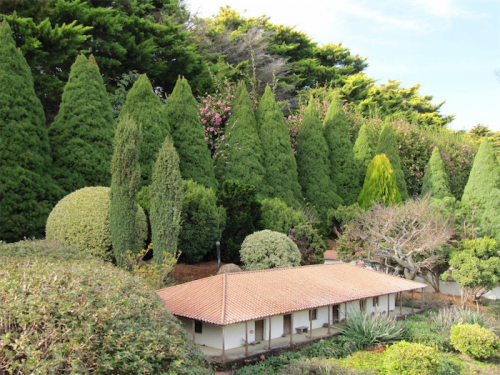
CONIFERS are among the oldest living plants in the world.

For example, 4500-year-old specimens of the ancient Bristlecone Pine, Pinus longaeva, battle the elements in the 3000-metre-high White Mountains of California.
Conifers can include evergreen and deciduous varieties providing wonderful autumn colour. They can provide interest for the smallest garden to pots on a balcony. Farmers have used conifers for windbreaks for more than 150 years, mainly Pinus radiata as seen in ACT forests, growing in poor soils with very little rainfall.
IN the early days of Canberra correct labelling of plants was minimal, if at all, and some conifers bought in the belief they would grow only to, say, 12 metres tall grew to 20 metres or more.
Examples can be seen in the older suburbs, lifting driveways or even in some instances affecting house foundations. These mini-monsters were all right in the large gardens in Red Hill and Deakin, but not for the standard quarter-acre block in suburbia.
The range of conifers is huge and it’s important to read the garden-centre labelling carefully as to size, although most labels only show growth as at 10 years and not the ultimate size.
However, I don’t recommend growing Cupressocyparis “Leylandii”, promoted widely as an ideal hedge. This is strictly for country property windbreaks. It grows into a large tree, so much so that in the UK it has been banned by parliament from being grown in urban areas. Problems included disputes with neighbours from blocking out sunlight to roots getting into drains. Without regular, hard pruning, once it gets away it can easily grow to 30 metres and, no matter how often it’s pruned, the trunk keeps growing and growing.
Unfortunately, all this has given conifers a bad name and they have fallen out of popularity in recent years. But this need not be so.
For anyone establishing a new garden or renovating an older one, an ideal place to see conifers in Canberra, from miniature to dwarf and slow-growing conifers, is at the Cockington Green Gardens in Nicholls.
Its conifers were selected to tie in with the miniature houses and other buildings. On the other hand, conifers make an ideal hedge and were also popular in older suburbs, with one of the best being Thuja smaragd.
ANY pruning of conifer hedges should be undertaken without delay before severe frosts arrive. Care should be taken not to cut into the old wood as most conifers will not regrow from this wood.

Conifers with ericas at Bressingham Gardens’ “Foggy Bottom”.
ADRIAN Bloom is acknowledged as a world authority who has spent nearly 50 years growing and promoting the beauty of conifers.
The Englishman followed in his legendary father Alan Bloom’s footsteps at their Bressingham Gardens and Nursery at Diss in Norfolk, which features the amazing perennial gardens, laid out by Alan, and Adrian’s “Foggy Bottom” conifer gardens.
If you have never thought seriously about planting conifers, these gardens will instantly change your mind.
Likewise, I recommend Adrian Bloom’s book “Gardening with Conifers”, which is in its second edition.
Jottings…
- The autumn flowering bulb Nerine “Bowdenii” makes a great indoor cut flower, lasting several weeks.
- Move indoor plants away from windows with frosty night air, similarly move them from near heating ducts.
- Move Helleborus now, without delay, cutting the foliage to ground level to encourage winter flowering.
- Final reminder to remove manual water timers from taps before frosts destroy them.
- Sow broad bean seeds, transplant potted chives, sow seed or transplant onions.
Who can be trusted?
In a world of spin and confusion, there’s never been a more important time to support independent journalism in Canberra.
If you trust our work online and want to enforce the power of independent voices, I invite you to make a small contribution.
Every dollar of support is invested back into our journalism to help keep citynews.com.au strong and free.
Thank you,
Ian Meikle, editor




Leave a Reply